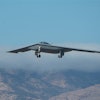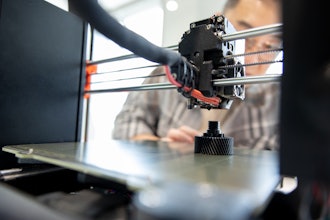SEATTLE (AP) — Boeing Co. performed a key crash test Thursday on its new 787 Dreamliner, dropping a 10-foot-long (3-meter) fuselage section from a height of about two stories to see how the carbon-fiber composites would hold up on impact.
Technical specialists with the Federal Aviation Administration observed the test, conducted at Boeing's Apache helicopter manufacturing plant in Mesa, Arizona.
In June, the FAA told Boeing it had to prove that the 787, which has an all-composite fuselage, has crashworthy characteristics that are comparable to those of a plane with an aluminum fuselage.
The 787 is the first large commercial airliner being made mostly from carbon fiber-reinforced plastics, which are lighter and sturdier than aluminum but also more brittle and less shock absorbent.
The test was designed to simulate the vertical impact of an emergency landing on essentially flat terrain — not a full-tilt crash.
The top of the fuselage section tested Thursday was taken off to make it easier to lift and drop from a height of 15 feet (4.57 meters) onto an inch-thick steel plate.
Engineers will analyze the test data gathered on high-speed cameras, strain gauges and other instruments to see if they validate the company's computer analysis of how the fuselage would fare under crash conditions.
''We don't expect to have any information on how it went until at least next week,'' Boeing spokesman Adam Morgan said Thursday.
Boeing is not releasing detailed test results, which the company considers proprietary.
The vertical drop test was the third and final 787 crash test performed at Boeing's Apache helicopter plant, Morgan said.
The first, conducted late last year, entailed slowly crushing a fuselage section between steel plates. In the second, performed a few months ago, engineers rammed a steel plate into the belly of a fuselage section positioned upside down on the ground.
Results from the first two tests matched Boeing's computational analysis, which had shown the 787 to be crashworthy in such test conditions, Morgan said.
Boeing debuted its first 787 in early July, but is still working to get that plane ready for flight. The company has said it's shooting to begin flight testing by late September, but has acknowledged it might not happen until October.
Boeing officials insist the 787 remains on track to be delivered to its first customer, All Nippon Airways, next May.


















